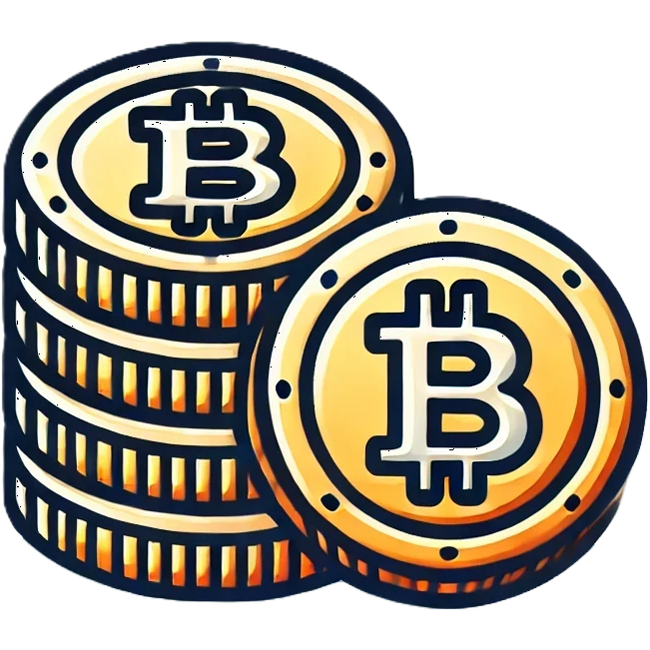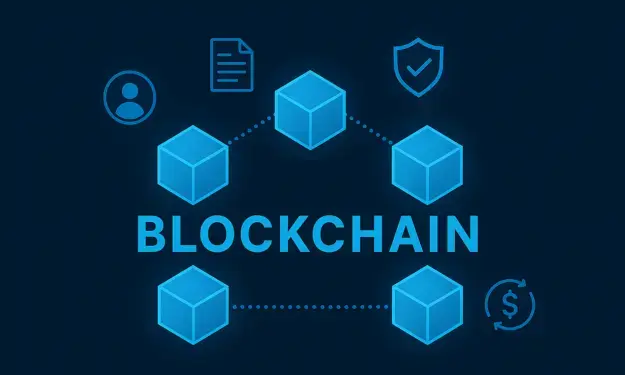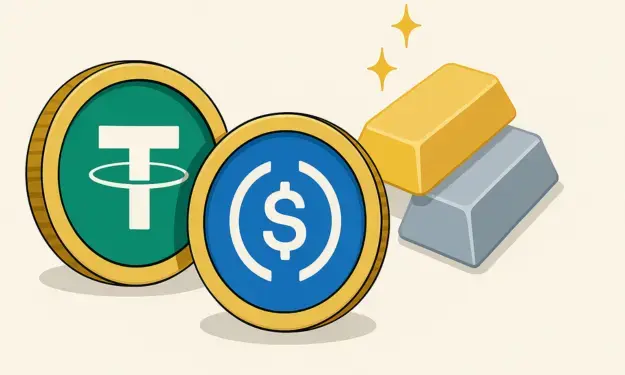Publication date: July 3, 2025
Imagine multiple returns with the same capital, without leaving your position. That's exactly what EigenLayer makes possible: a smart middle layer on Ethereum that lays the foundation for a new era of blockchain infrastructure. Where many projects focus on scalability and efficiency, EigenLayer focuses on something more fundamental: reusing trust.
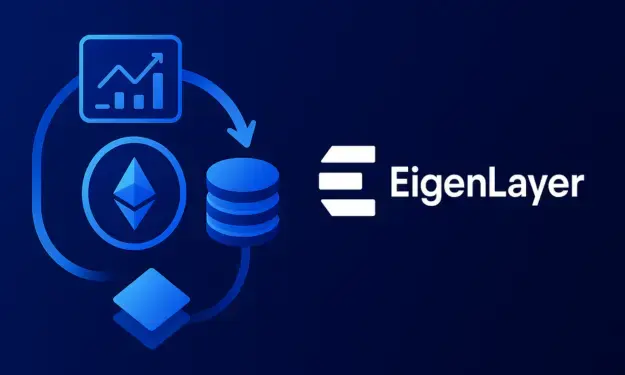
What is EigenLayer?
EigenLayer is a new protocol on Ethereum that responds to a growing need within the blockchain world: getting more return from existing staked assets. The project introduces a mechanism known as restaking, which allows users to redeploy their staked ETH or liquid staking tokens, such as stETH to earn additional rewards. In doing so, EigenLayer acts as an intermediate layer on Ethereum that adds both security and flexibility to the ecosystem.
What makes EigenLayer unique is that it not only leverages Ethereum's security but also makes it extensible to other applications. By "reusing" staked assets, new protocols can derive trust from Ethereum's existing infrastructure without building a network of validators themselves.
What is staking?
Staking means tying up your crypto tokens for a period of time to contribute to the operation and security of a blockchain network operating with the proof-of-stake mechanism. Instead of computers solving complicated sums (as with bitcoin), these networks randomly choose participants, often based on how much crypto they have staked to verify and add transactions to the blockchain.
By staking:
-
Help the network function.
-
Receive rewards, often in the form of interest;
-
But you can't move your coins temporarily.
Some networks let you strike directly, others through an intermediary or a so-called liquid strike token that remains tradable. Staking is thus a way to earn passive income from your crypto, while at the same time contributing to the security of the network.
How does EigenLayer work
Typically, people who own Ethereum can pin (strike) their coins to help secure the Ethereum network. In return, they receive a reward. EigenLayer adds something extra to this. It allows those same people also to use their staked Ethereum to support other new crypto projects. For example, networks that provide fast payments, reliable price information or secure connections between blockchains.
Because these strikers then "double down" on their Ethereum, they can earn additional rewards. But that also carries more risk. If one of those new projects fails or makes mistakes, (part of) their staked Ethereum may be lost. This is called slashing.
For new crypto projects, EigenLayer offers a smart solution: they don't have to build a whole new security system from scratch, but can rely on Ethereum's existing security. This saves time, money, and technical effort.
Recent developments
EigenLayer is currently in an important phase of growth. Several strategic events took place in recent months that put the protocol firmly on the map:
-
Integration with rollups and middleware: EigenLayer is increasingly being deployed by new Ethereum rollups and protocols such as Fraxtal and EigenDA to strengthen their data availability and security.
-
Growth of liquid restaking: Projects such as Renzo and Ether.fi allow private users to easily participate in restaking. This increases the adoption of EigenLayer among a wider audience.
-
Institutional support: Major investment funds such as a16z, Coinbase Ventures and Polychain Capital have invested a total of more than $100 million in EigenLayer, reinforcing confidence in the protocol's potential.
Price trend of $EIGEN
The chart below shows the price movement of EigenLayer (EIGEN) against Ethereum (ETH) over the period from April to early July 2025. In these months, both tokens achieved positive returns: Ethereum increased by about 42.5%, while EigenLayer showed an increase of 40.2%.
From the beginning of May, it is noticeable that the price movements of OWN and ETH have become increasingly similar. Yet there is a clear difference in dynamics: where Ethereum shows a steady rise, EigenLayer has more volatility. The larger price swings indicate a higher degree of speculation or sensitivity to short-term news, something more common among smaller altcoins.
In the latter phase of June to early July, both coins show signs of recovery, with OWN appearing to recover slightly faster than ETH. This underscores the token's greater volatility: in times of optimism, recovery can be faster, but conversely, the same is true in negative market trends.
The close link with sentiment around Ethereum shows that investors see OWN as part of the broader Ethereum ecosystem. Yet the project stands out for its innovative approach within the strike. While traditional strike is already widely used, EigenLayer offers additional opportunities by applying restaking, which can provide additional revenues and applications. Whether the stock price is able to stabilize in the near term depends heavily on investor confidence and further adoption of the protocol. Despite the recent downturn, EigenLayer remains substantively one of the most innovative projects within the Ethereum network.
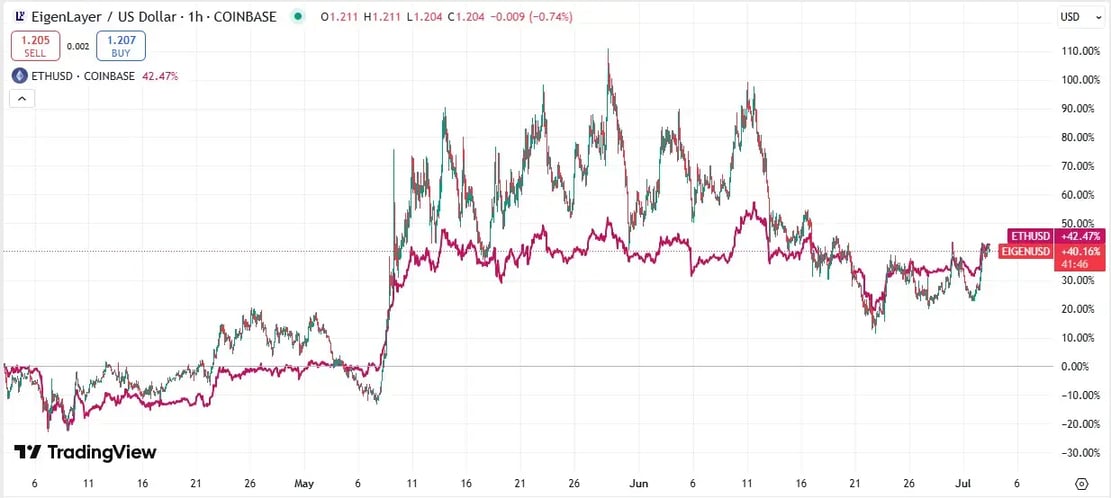
What could drive up the price of EigenLayer?
1. Adoption of restaking within rollups and dApps: As more projects use EigenLayer for their security, demand for the protocol and token increases.
2. Expanding the ecosystem: New applications for restaking, such as AI authentication, storage or computational infrastructure, may lead to a broader role for EigenLayer within Web3.
3. Return on investment for strikers: Higher rewards via restaking encourage participation, which can support increasing demand for $EIGEN.

.svg)




